The document discusses key concepts of inheritance and interfaces in Java, emphasizing their roles in object-oriented programming for code reusability. It explains different types of inheritance, method overriding, the use of the super and final keywords, as well as the characteristics of interfaces compared to abstract classes. Key examples demonstrate how these concepts are implemented in Java code.




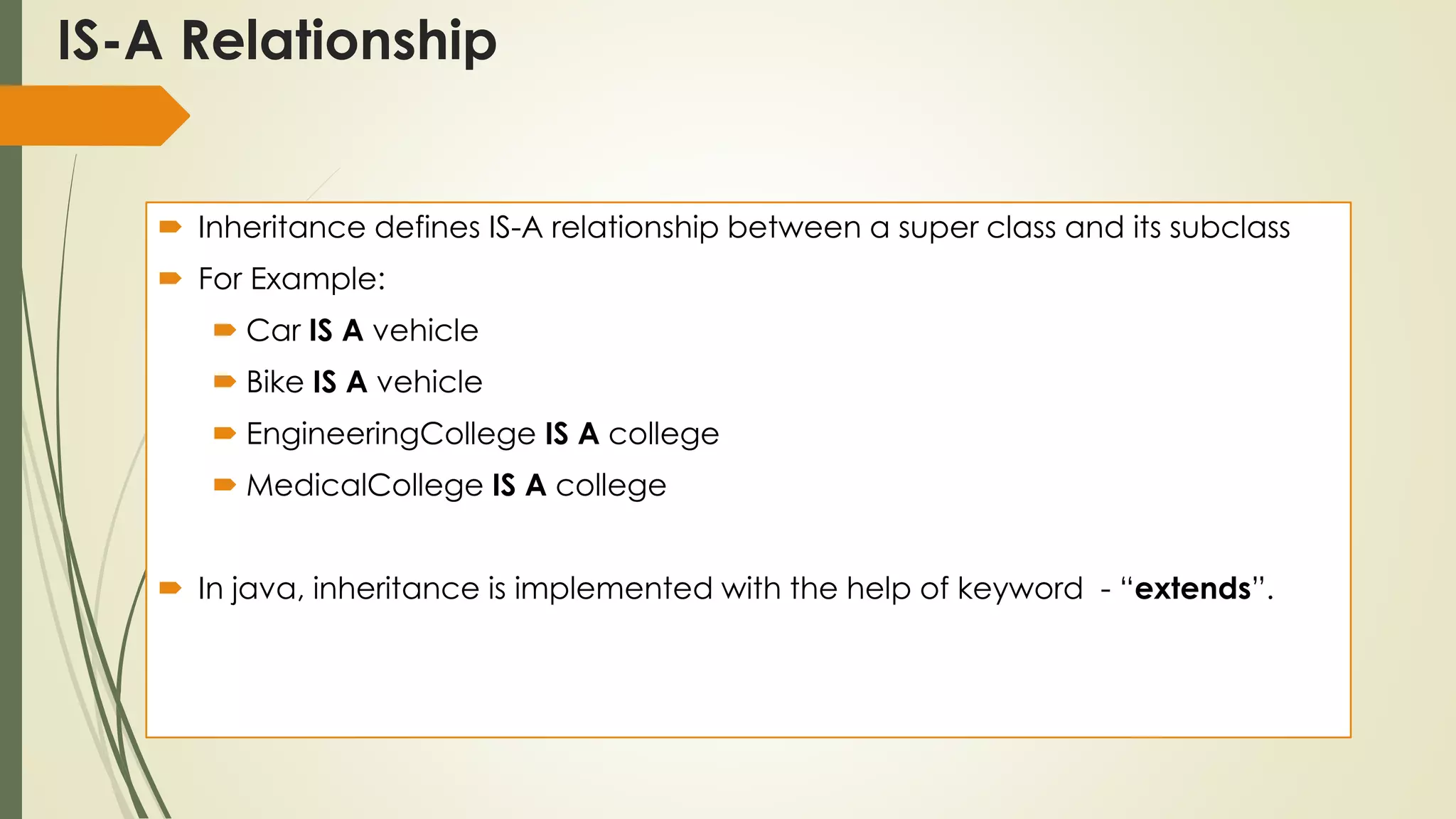
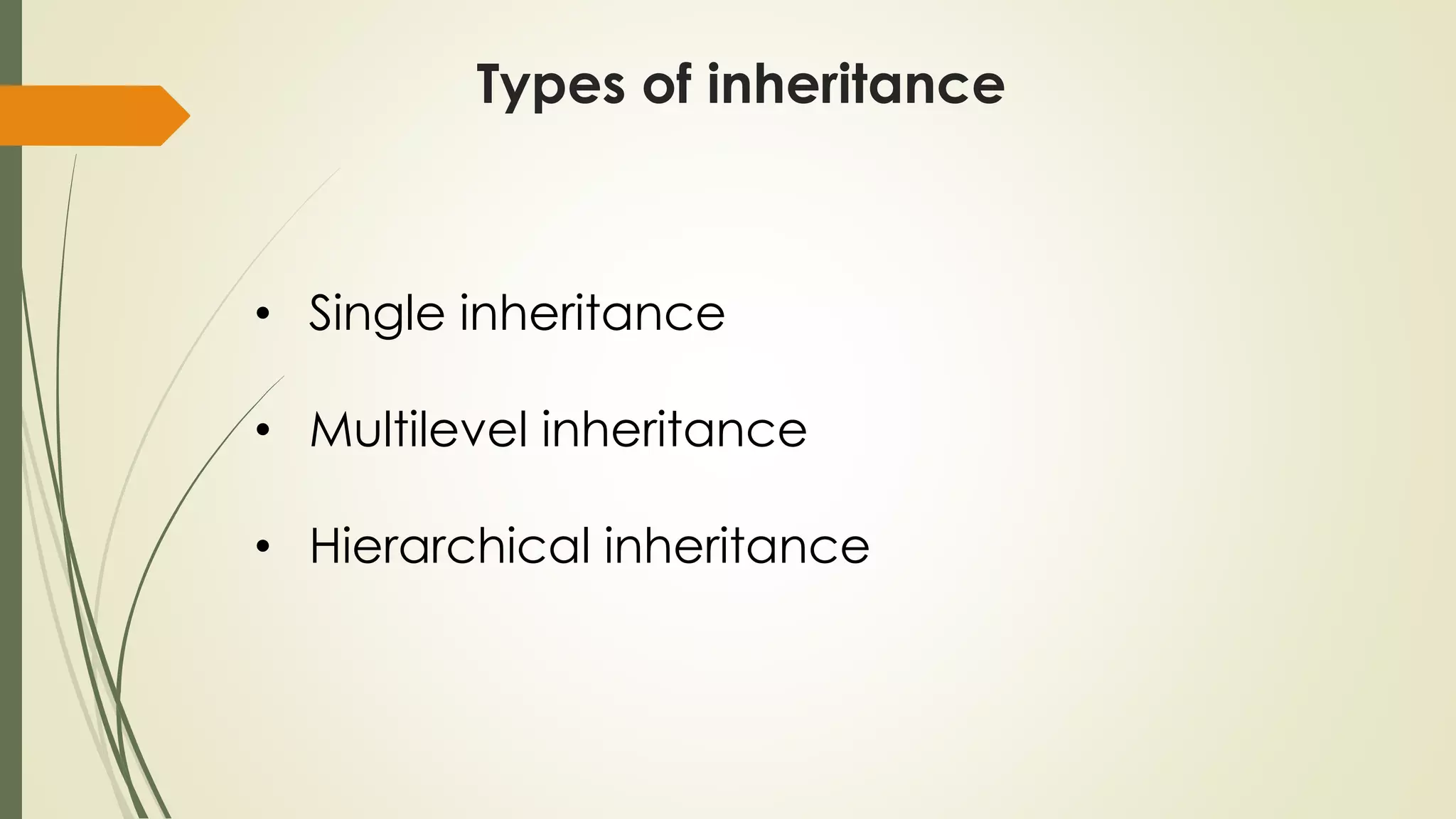
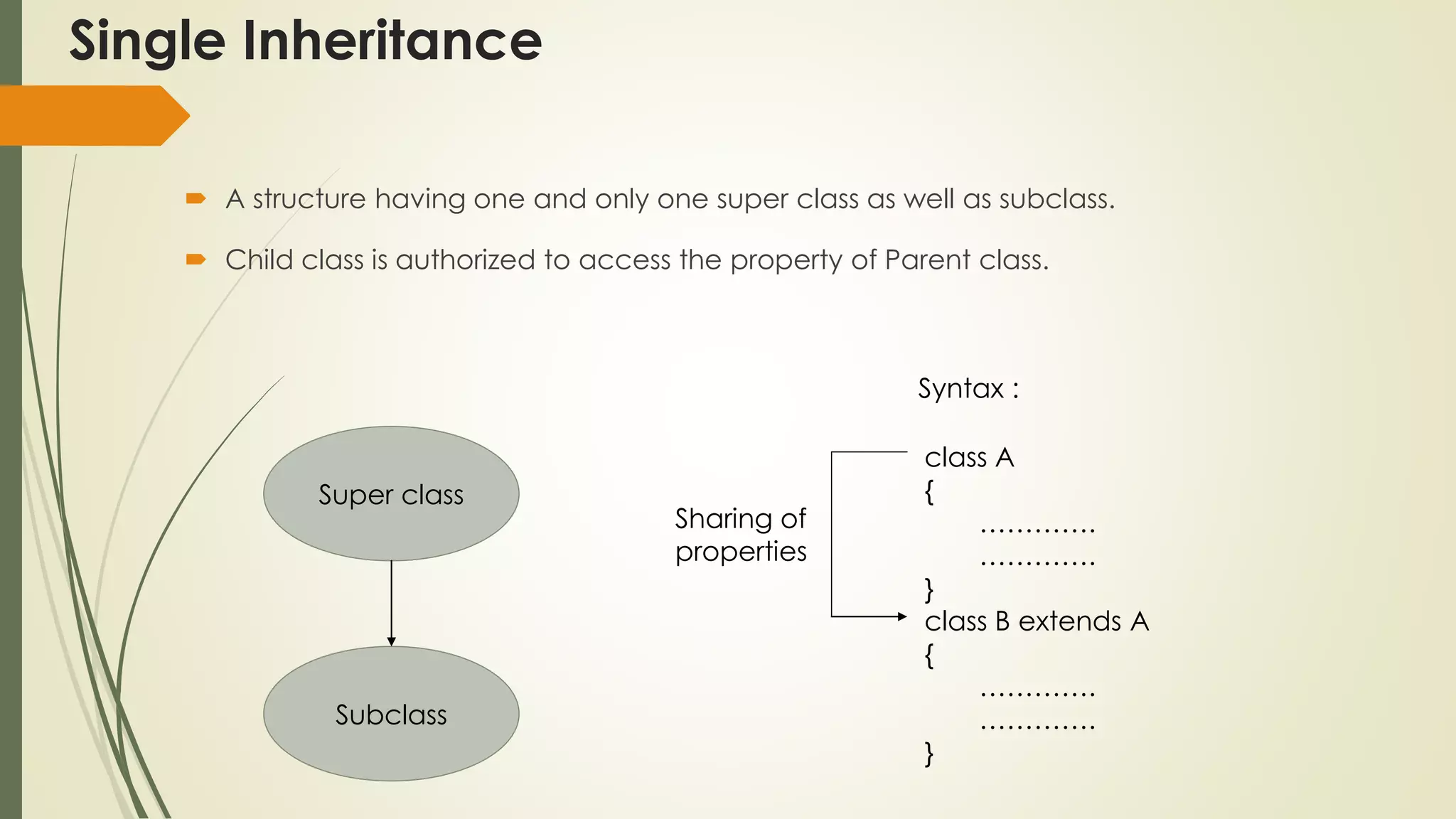



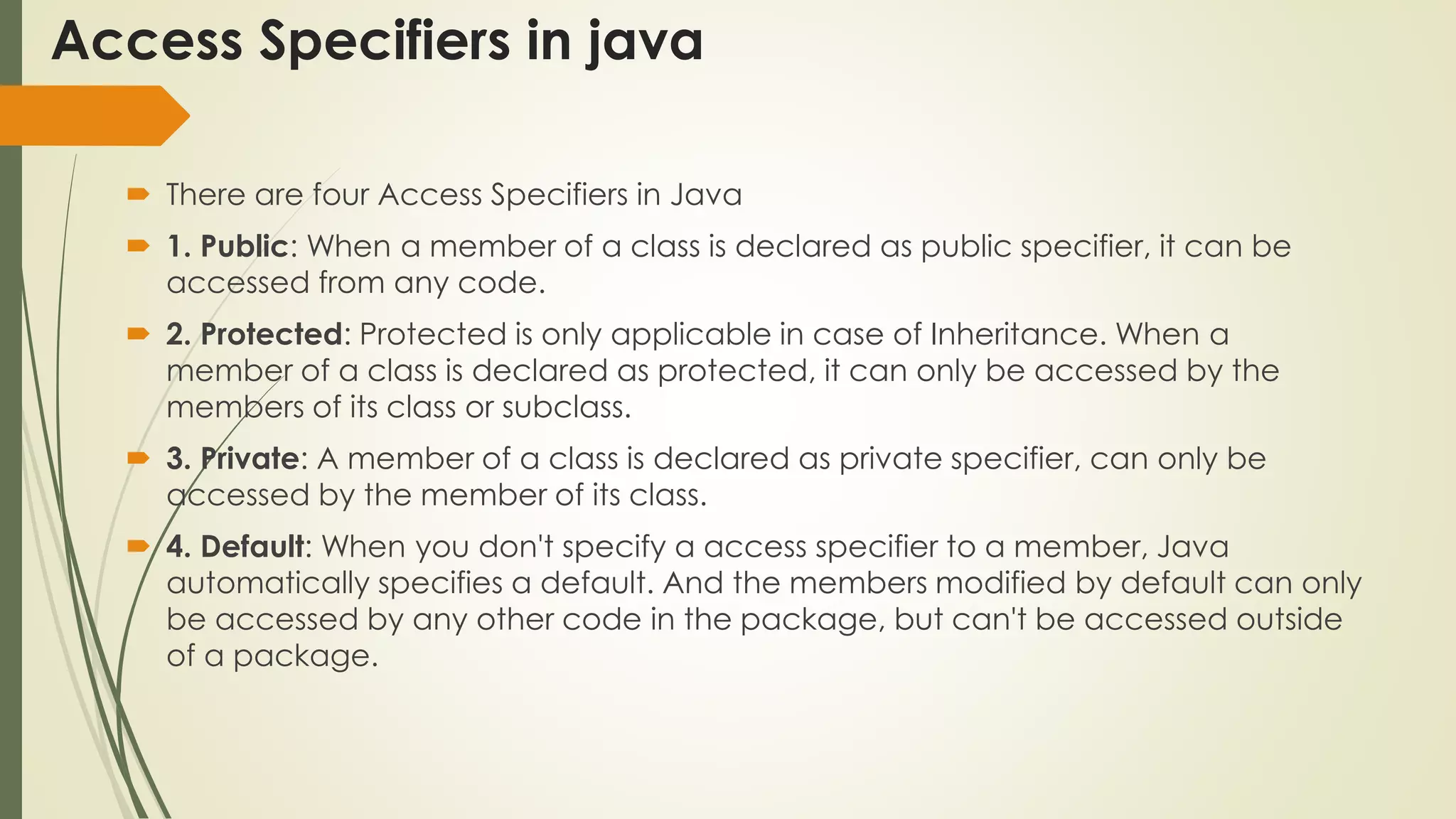
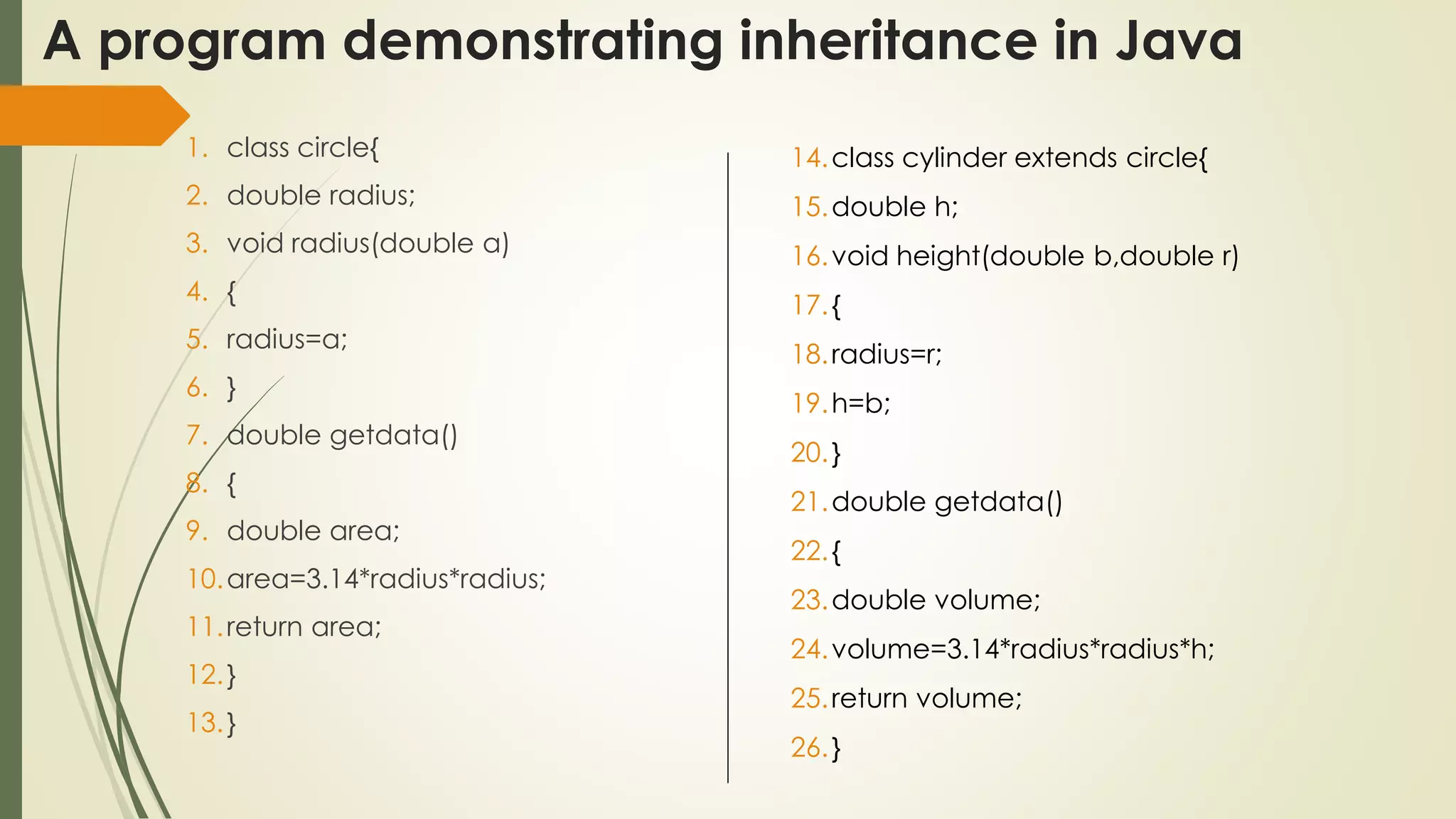
![A program demonstrating inheritance in Java 27.public static void main(String[] args) { 28.cylinder c1=new cylinder(); 29.c1.height(5.12,6.5); 30.double area,volume; 31.volume=c1.getdata(); 32.System.out.println("Volume of cylinder :"+volume); 33.circle ob=new circle(); 34.ob.radius(4.44); 35.ob.getdata(); 36.area=ob.getdata(); 37.System.out.println("area of circle:"+area); 38.} 39.} Output of program: Volume of cylinder :679.2447999999 Area of circle:61.90070400000001](https://image.slidesharecdn.com/inheritanceandinterface-180727175107/75/Inheritance-and-interface-13-2048.jpg)
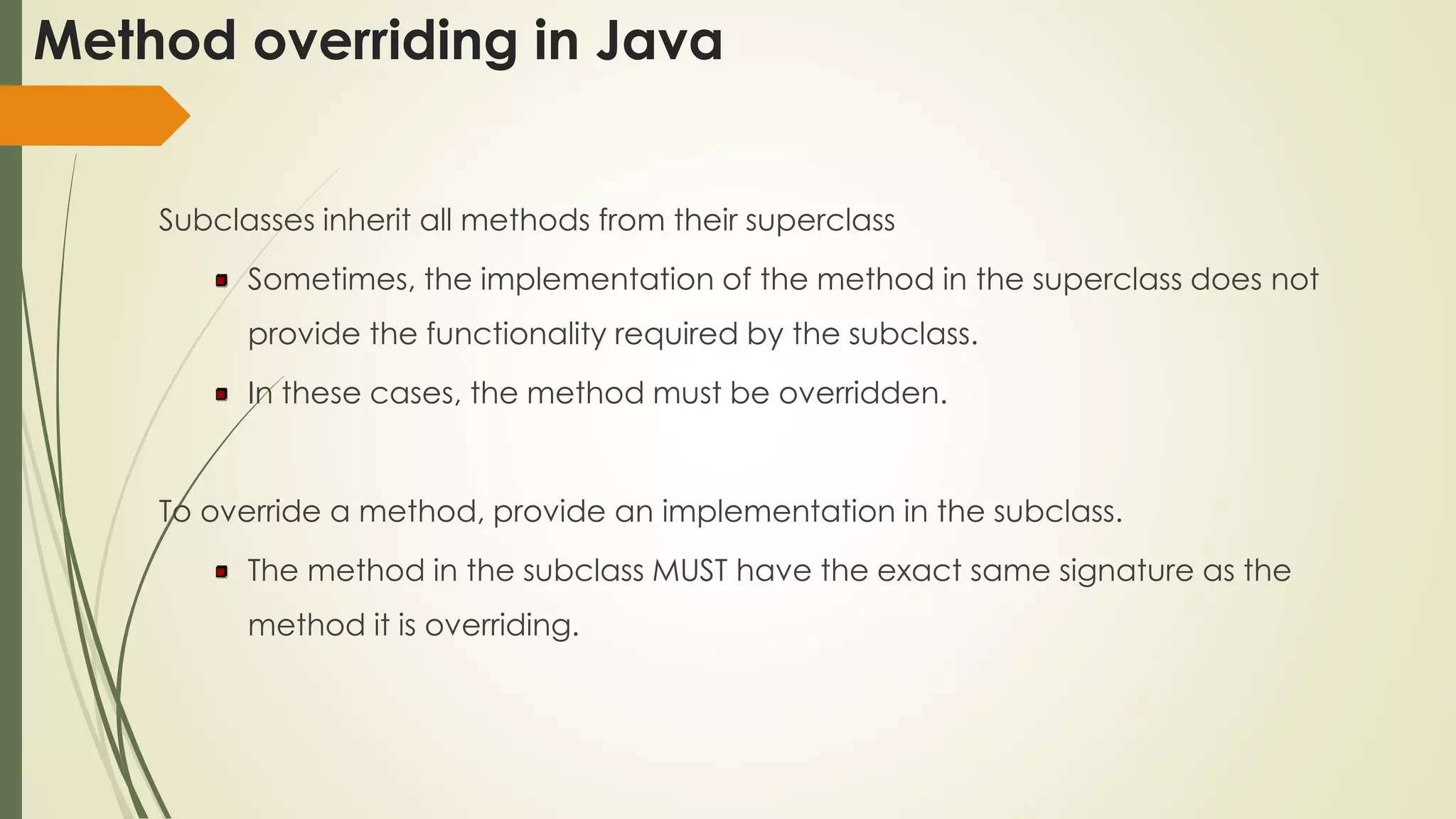
![Program demonstrating method overriding 1. class A{ 2. void display() 3. { 4. System.out.println("This is parent class."); 5. } 6. } 7. class B extends A{ 8. void display() 9. { 10.System.out.println("This is first child class"); 11.} 12.public static void main(String[] args) { 13.B b1=new B(); 14.b1.display(); 15.} 16.} Output: This is first child class](https://image.slidesharecdn.com/inheritanceandinterface-180727175107/75/Inheritance-and-interface-15-2048.jpg)


![Program to demonstrate Super Keyword 1) class Animal{ 2) Animal(){System.out.println("animal is created");} 3) } 4) class Dog extends Animal{ 5) Dog(){ 6) super(); 7) System.out.println("dog is created"); 8) } 9) } 10)class TestSuper3{ 11)public static void main(String args[]){ 12)Dog d=new Dog(); 13)}} Output: Animal is created Dog is created](https://image.slidesharecdn.com/inheritanceandinterface-180727175107/75/Inheritance-and-interface-18-2048.jpg)
![Final Keyword The final keyword in java is used to restrict the user. The final keyword can be used in mainly 3 context. 1. Variable: If you make any variable final, you cannot change the value of final variable. Example: 1. class bike{ 2. final int speedlimit=50; 3. void run(){ 4. speedlimit=60; //Compile-time error 5. } 6. public static void main(String[] args){ 7. Bike ob=new bike(); 8. ob.run(); 9. } 10. } Output: Compile time error](https://image.slidesharecdn.com/inheritanceandinterface-180727175107/75/Inheritance-and-interface-19-2048.jpg)
![Final keyword 2. Method: If you make a method final, you cannot override it. Example: 1. class bike{ 2. final void run(){ 3. System.out.println(“Running”); 4. } 5. class honda extends run(){ 6. void run(){ //compile time error 7. System.out.println(“Running at 100 kmph”); 8. } 9. } 10. public static void main(String[] args){ 11. Bike ob=new bike(); 12. ob.run(); 13. } 14. } Output: Compile time error](https://image.slidesharecdn.com/inheritanceandinterface-180727175107/75/Inheritance-and-interface-20-2048.jpg)
![Final keyword 3. Class : If you make any class final, you cannot extend it. Example: 1. final class bike{ 2. //code here 3. } 4. class honda extends run(){ //Compile time error 5. void run(){ 6. System.out.println(“Running at 100 kmph”); 7. } 8. public static void main(String[] args){ 9. honda ob=new honda(); 10. ob.run(); 11. } 12. } Output: Compile time error](https://image.slidesharecdn.com/inheritanceandinterface-180727175107/75/Inheritance-and-interface-21-2048.jpg)

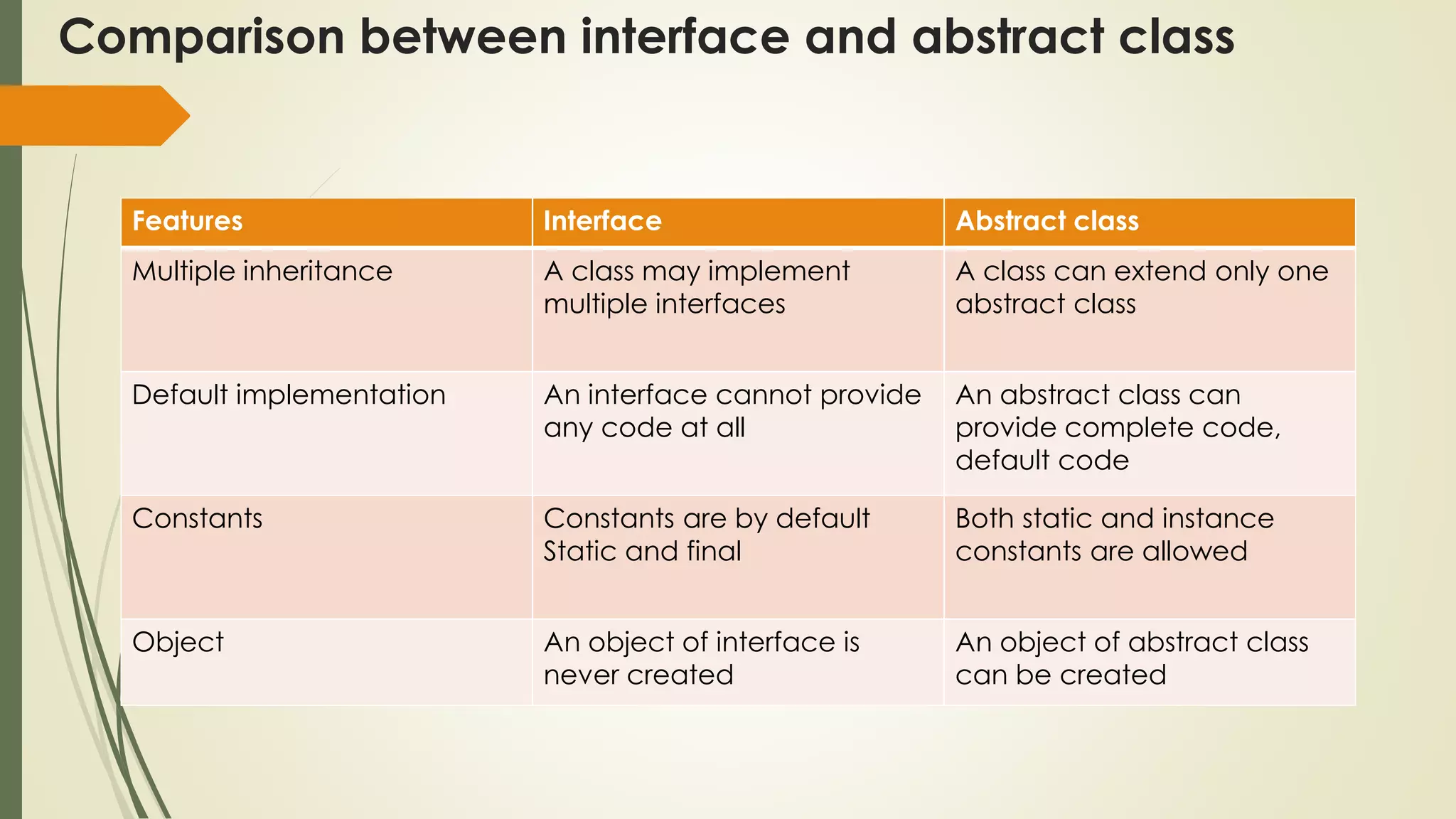
![Program demonstrating interfaces 1. interface Printable{ 2. void print(); 3. } 4. interface Showable{ 5. void show(); 6. } 7. class A7 implements Printable,Showable{ 8. public void print(){System.out.println("Hello");} 9. public void show(){System.out.println("Welcome");} 10.public static void main(String args[]){ 11.A7 obj = new A7(); 12.obj.print(); 13.obj.show(); 14. } 15.} Output: Hello Welcome](https://image.slidesharecdn.com/inheritanceandinterface-180727175107/75/Inheritance-and-interface-24-2048.jpg)
